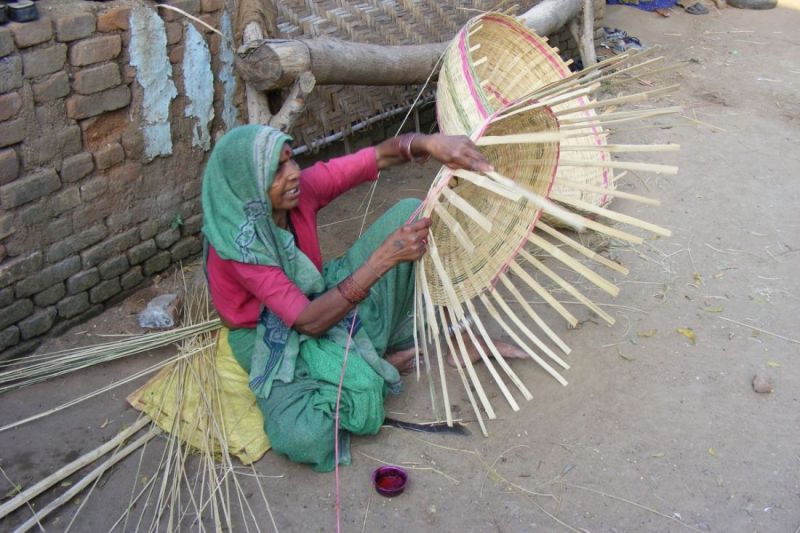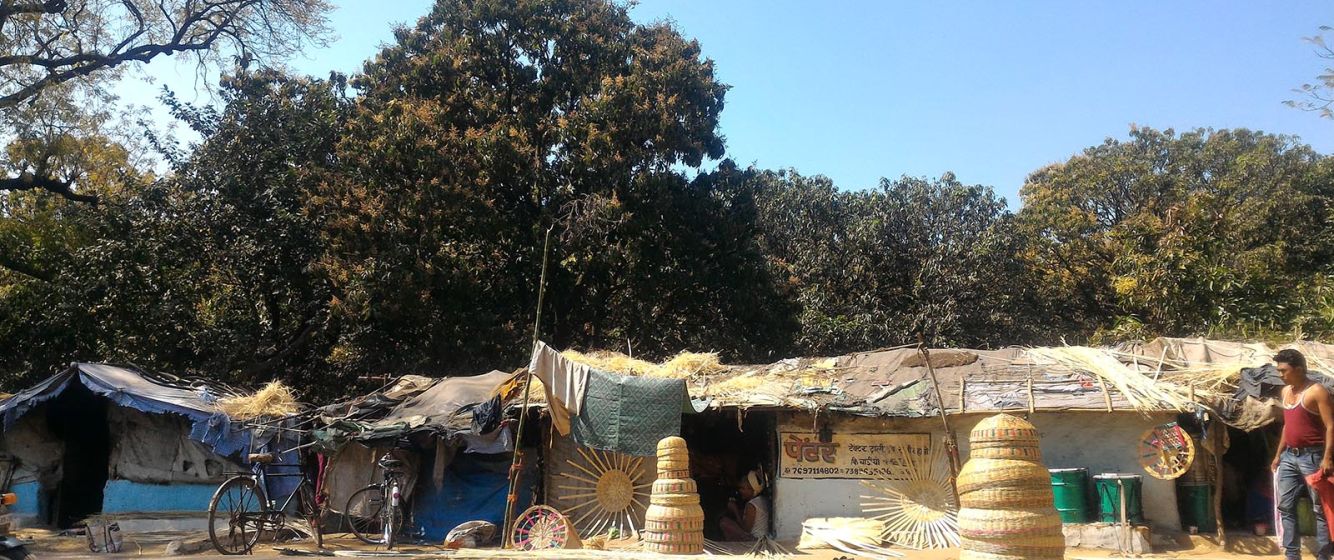Retelling the neighbourhood
All cities and towns contain fragments of ecological and historic landscapes that are intimately linked to spaces of human residential and livelihood settlements. When the city or town is explored from the perspective of the people, a more humanistic understanding of the local emerges. The following articles are reflections from two ‘Humanities across Borders (HaB)’-supported projects – ‘Delhi Memory Archive’ and ‘From Forest to Town: Transformation of the Commons’ – both carried out by the Centre for Community Knowledge (CCK) at Ambedkar University Delhi (AUD). Although from two different perspectives, their shared attempt is to explore the various ways in which meanings and identities are associated with the neighbourhoods that make up a city or a town. These have been enriched by exchanges with other HaB projects. We warmly invite other scholars and practitioners to share with us their experience and understanding of ‘neighbourhood’ across all dynamic socio-cultural realities.
{Retelling the neighbourhood comprises of two articles written by Mesha Murali and Kumar Unnayan; and each is posted separately.}
The growing urbanisation in India has witnessed an exponential increase in census towns over the past few decades. Amidst the country’s rapidly changing forest and farm landscapes, the rising townships are important sites of understanding everyday social mobilities at a local and microscopic level. The understanding of place-specific narratives in such settlements presents us with the opportunity to assemble a publiccentric, multi-dimensional account of mobilities that draws upon the archives of orality and memory. A pool of local narratives can sometimes “reveal lesser-known stories of a place and have the possibility of disturbing meta-narratives with their access to alternative strands of knowledge[1].” Beginning in 2017, the research project ‘From Forest to Town: Narratives of Transformation of the Commons’ aimed to look at the lived experiences of the local residents in one such town through first-hand oral narratives. The narratives were placed within an arena of tension and struggles of several local communities and the interconnectedness of their socio-cultural heritage. They are as much marked by a sense of resilience as by conflict. As private and public memories come together, a non-linear story of everyday negotiations unfolds around mobilities vis-à-vis power relations, caste hierarchies and local information networks.
A bustling new town
Pipariya in Madhya Pradesh, India, lies along the east-west cross country railway line at a wide point in the Narmada valley. Long time residents often retrace the town’s origins to the linking of Jabalpur-Itarsi section (March 1870) on the Bombay-Calcutta railway line in the colonial era. As a railhead brimming with avenues of trade and commerce, it didn’t take very long for the then hamlet of Pipariya to attract people from the neighbouring villages and far-flung regions. The early Gond and Korku tribal inhabitants were soon joined by Goojar, Marwari, Kutchi, Sindhi, Barauaa, Borah, Jain, Irani, Kanjar, Mehtar, Basod and a number of other communities. Inevitably, the conjoined histories of the now bustling town emerge from the multiplicity of the diverse narratives of these groups. In one of the recorded conversations, local pulse and oil trader Kishore Shah (83), a third generation migrant businessman from Gujarat, iterated that, “in the early days, this town was synonymous with only the railway station. It still is”. Railways are a significant marker in the quaint town’s public history. But with more than two lakh registered voters, it has long ceased to be a mere railhead and is now a centre of a rapid growing agro-commercial economy. Pipariya assembles the agricultural and farm produce of the neighbouring villages. The in-flow of people from these villages is a familiar sight to the local populace. A fair share of small-scale vendors flock to the town’s daily/weekly bazaars to sell vegetables, fruits, spices, pickles, dry fruits, street-food, sugarcane juice, fish, broomsticks, toys, wood/bamboo paraphernalia and many other essential commodities. Many have lived on the outskirts for generations and aspire to find their feet within the urban epicentre. As he prepared the stall in the weekly Itwara bazaar, Radheyshyam Ahirwar (66) remarked, “I grew up in the nearby village of Gadaghat and worked as a farm-labourer in the fields of upper-castes. It’s only after my son became a driver that we started selling vegetables. It pays better but not enough to live in the main town”.

Artisan Kamlabai Banskar stitches a basket, Ayodhya Basti, Pipariya, 2017. Photo from CCK archives, AUD.
Living on the margins
While the quoted excerpt highlights a singular narrative, the equations between social strata and mobility become more apparent in the community narratives of the skilled bamboo artisans of Basod samaaj[2]. Munnalal Banskar (62), who was joined by other samaaj members as we spoke to him, recounted that many Basod families moved to the town from the nearby villages to escape the atrocities of upper castes. Concentrated at the Ripta Bridge, the families have been living on the town’s peripheries for more than three decades. Bamboo products such as baskets, carpets, brooms, handheld fans, along with barrel-shaped drums, dot the sideways outside their huts. With insecure access to civic amenities, their unauthorised thatch roof huts are frequently bulldozed by the local authorities. The community’s isolation is reflected in Munnalal’s words, “[t]here is an old saying in our Bundeli language. ‘Once you have had a taste of the village’s water and the city’s money, you can’t forget either of them’. But we have been denied both. We were harassed in the village. The city has barely paid heed to us. We have lived here for so long. My daughter got married here. My grandchildren were born here. Yet we feel that we moved from one place only to become invisible in the other. Isn’t this our home too?” The Basods are one of the largest groups among the state’s notified Scheduled Caste population, and most are also landless. Their experiences indicate how the local mobilities are regulated through the power relations and information networks of the upper as well as locally dominant caste groups. With no landholding of their own, a number of low-caste communities tackle the inequitable challenge of making a livelihood through such networks. The failure to become a part pushes them further to the margins of the local demographics. They are there but yet never noticed. At this juncture, community ethnographies that deal with the negotiation of the social fabric can operate from two tangents. While they counter the mainstream imaginations of a place/neighbourhood/ community, they are also capable of becoming narratives of struggles and reclamation of space by the people that inhabit them.
Adapting to market demand
The community narratives of another notified backward community, Barauaa Kahaar samaaj, provide further insights in the matter. The samaaj traces their early caste bound professions as water porters, fishermen and riverbed farmers. As the professions became obsolete, they resorted to becoming domestic and agricultural helpers as well as undertaking odd labour such as cattle herding. As vegetable sellers, caretakers and domestic helpers, they had to continually navigate the public and personal spaces of the town and thus became a part of the information network of the locale. The nature of their mobility marked itself as a somewhat familiar sight in the town over a period of time. It stands in sharp contrast to the Basods who did not venture out much, except during the fairs, bazaars and other festivities. Today, many Barauaas have built cement houses and set up small scale house-run-shops of their own. Unlike the Barauaas, the Basods have been a community heavily dependent on their artisanal skills for a livelihood. The Basods’ relatively late entrance to the town coincided with the arrival on the market of cheap plastic products, which only made them more vulnerable. The demand for bamboo products has gone down drastically. The artisans also claim that the nationalisation of bamboo and the government organisation of the bamboo industry has resulted in a mafia that controls the supply of the raw product. Naturally, they are challenged to expand their skill-set to earn a living. It doesn’t come as a surprise that many from the new generation are unwilling to continue the work and have taken up new occupations such as playing the drums at wedding ceremonies or during funeral processions. The latter is another caste-bound profession in many parts of the country.
Social mobility denied
The narratives supplement the fact that disadvantaged communities such as Basods and Barauaas are continually denied a move upwards on the social pyramid, as the opportunities to wriggle out of caste roles are often made scarce. The mobilities of both communities are central to the town’s transformation from the inside. Yet, it is rather telling that outside their inhabitations, most of the recorded local conversations remained either dismissive or reluctant to delve into their mobilities and struggles. In return, the communities have a lot to say, but are seldom heard. During a group conversation on the significance of oral testimonies in understanding social mobilities, a fellow researcher and a local resident shared an observation: “In any town, a few places are more silent than others.” The many oral, informal and personalised narratives of a growing township such as Pipariya can become instrumental in understanding how different stakeholders relate to the claims of social productions of collective pasts and present-day realities. The use of individual and community narratives can undo the popular discourses associated with a place. It also helps to contextualise the local realities against the wider global dynamics. Understanding experiences of mobilities among different communities is one among the many examples that emphasise the urgency to go past the top-to-bottom approach to reading a place.
Kumar Unnayan, Senior Research Assistant at the Centre for Community Knowledge, Ambedkar University Delhi [email protected]/[email protected]
To read the next related article Sensing the layers: Notes from a weekly market by Mesha Murali: https://humanitiesacrossborders.org/blog/sensing-layers-notes-weekly-market
To visit the IIAS The Newsletter site: https://www.iias.asia/the-newsletter/article/humanities-across-borders-programme-retelling-neighbourhood
[1] Sarkar, S. (unpublished) Preface, Aise Basi Pipariya, CCK, AUD.
[2] Samaaj: The Hindi term is widely used by the locals to refer to different caste groups, rather than to ‘society as a whole’ or a voluntary association.
